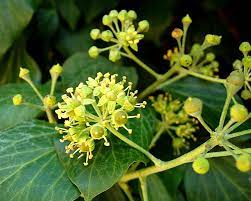Hedge Clipping 5
- Jane Reeve

- Sep 4, 2023
- 2 min read
Southern Water Biodiversity Grant funded - Hedging Our Future Project
August has been a quiet month workwise with lots of weeding and watering of the trees in the tree nursery to ensure we have good stock for our hedge planting this coming winter.
Hedges - Autumn and the time of plenty
In autumn the trees that make up the hedgerows produce many varieties of fruit that are very important for a large range of wildlife. The fruit can take many forms with nuts, berries, and larger fruit. This is the trees’ way of making sure that their genetic future is assured through dispersal and propagation of seeds by tempting birds and mammals to carry them off, digest them and add a little fertilizer to the dropped pip.
This seasonal abundance is crucial for many species and they have adapted to this availability of riches by storing and hoarding as much as possible to get them through the lean months of winter. Birds like Jays collect acorns and cache them in lawns and flowerbeds so that they are available for recovery when other food sources are scarce. It is thought that Jays play a significant role in woodland regeneration through this behaviour. The Guardian has reported that experts have observed jays returning to newly growing saplings in the spring. They pull the plant upwards and remove the fleshy primal leaves that unfold as the first roots go down but leave the rest of the sapling untouched. The jay is said to feed these nutritious first leaves, known as cotyledons, to their young. Most of the saplings apparently survive this rough treatment.
Small mammals will also secrete these goodies in nesting chambers and burrows and our local favourite, the water vole, is no exception with a sweet tooth and a taste for blackberries and apples.
One often overlooked food resource in hedges is ivy. This often-maligned climber provides one of the last nectar hits for pollinating species and in September their flowers can be seen covered in butterflies, bees, wasps, and hoverflies. Going into winter these turn into hard black seeds that are often left until late winter and then eaten by blackbirds to get them through the last lean weeks before other food resources are available. Ivy in trees and hedges shades the tree trunks providing hiding places for invertebrates and forming great nesting habitat for birds and bats.
Ensuring newly planted hedges are made up of a wide range of species provides a food source for wildlife with a long fruiting season with some trees fruiting earlier, like cherries, and some later, like blackthorn. Popping in the odd fruit tree for added enhancement, and an understory of raspberries, logan berries or blueberries with create a super edible hedge.
Fancy helping out by collecting seeds from local trees? If you see a good strong native tree growing on the Manhood Peninsula then please do collect the seeds. If it is hawthorn, crab apple or blackthorn then the flesh on the outside needs to be scraped off and then the pips / stones put into earth filled pots. If it is an acorn then these can go straight into a pot. Any other trees like field maple, spindle, hazel or guelder rose are an unknown so give it a shot and let us know how you get on.











Comments